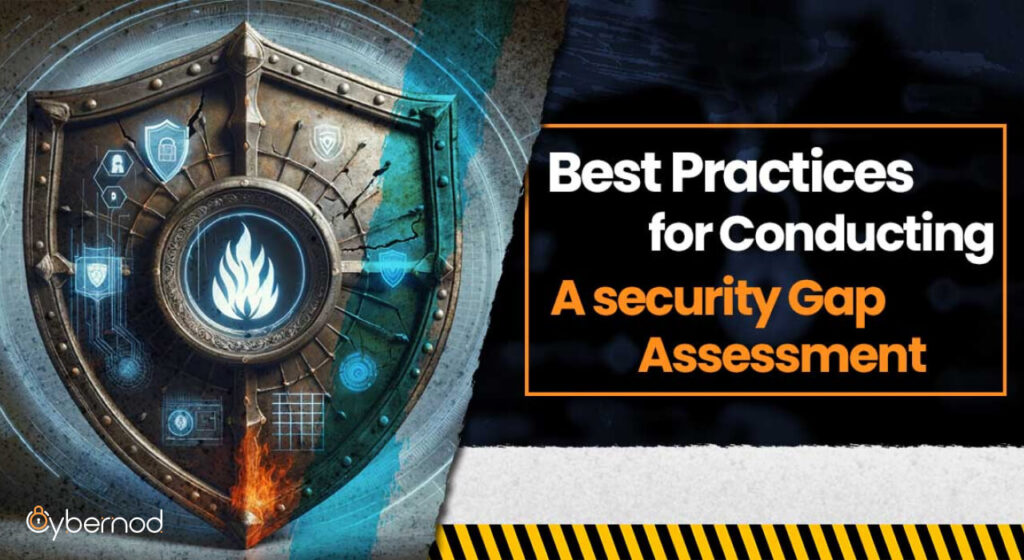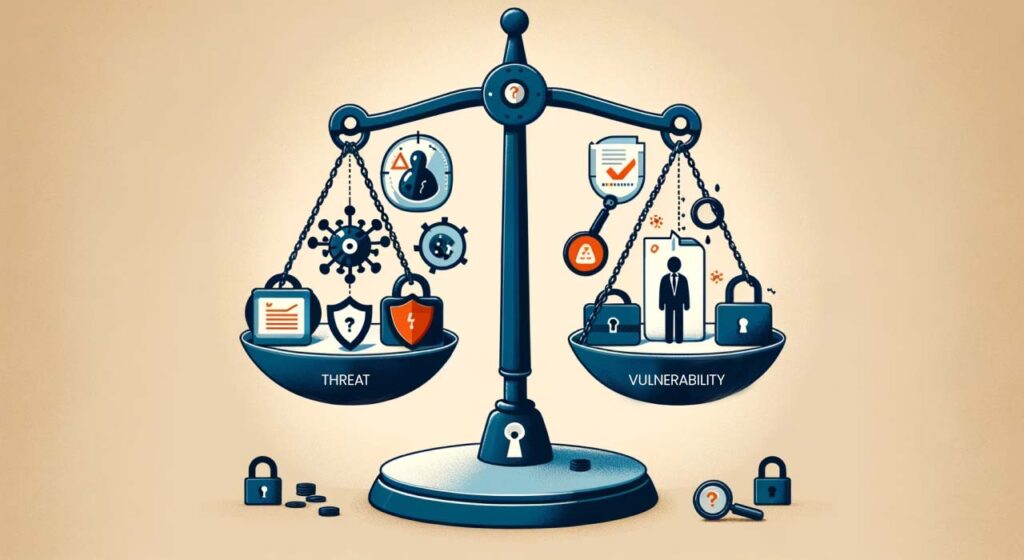
In today’s ever-evolving digital landscape, protecting your organization’s critical assets and information is paramount. This is where security gap assessments come into play. A security gap assessment is a systematic process of evaluating an organization’s current security posture against established standards and identifying weaknesses or vulnerabilities.
Regularly conducting these assessments offers invaluable benefits:
- Proactive Risk Management: By pinpointing security gaps, organizations can take proactive steps to mitigate potential threats and minimize the impact of cyberattacks.
- Compliance Adherence: Security gap assessments help organizations demonstrate compliance with industry regulations and standards, such as HIPAA or PCI DSS.
- Improved Resource Allocation: Identifying vulnerabilities allows for efficient resource allocation towards the most critical areas of security improvement.
Enhanced Decision-Making: Assessments provide valuable data and insights to inform security-related decisions, investments, and strategies.
This comprehensive guide dives deeper into the best practices for conducting effective security gap assessments. We’ll explore essential steps like framework selection, data gathering, risk assessment, and remediation planning. Additionally, the article provides actionable tips and resources to equip you with the knowledge and tools needed to implement successful assessments and strengthen your organization’s overall security posture.
learn more about the benefits of security gap analysis for small businesses: [Why Small Businesses Need a Security Gap Analysis?]
Selecting a Framework

Choosing a recognized industry-standard framework provides a structured approach and benchmark for your assessment. It offers a comprehensive set of controls and best practices, allowing you to compare your existing security posture against established guidelines. Some popular frameworks include:
- NIST Cybersecurity Framework (CSF): Offers a flexible, voluntary framework suitable for organizations of all sizes and sectors.
- ISO 27001: An internationally recognized standard focusing on establishing and maintaining an information security management system (ISMS).
- ISO 27002: Provides detailed guidance on controls and recommendations for implementing an ISMS.
The “best” framework depends on your specific needs. Consider these factors when choosing:
- Organizational size and industry: Some frameworks may be more relevant to certain sectors or types of organizations.
- Compliance requirements: If your organization needs to comply with specific regulations, choose a framework that aligns with those requirements.
- Complexity and resources: Consider the resource commitment and technical expertise required to implement each framework.
Defining the Scope:
Clearly defining the scope of your assessment is critical for ensuring its effectiveness and manageability. This involves determining the specific areas to be assessed, such as:
- Specific systems (e.g., servers, databases, applications)
- Departments or business units
- Data types (e.g., customer information, financial data)
Tips for Defining Scope:
- Start with high-risk or critical assets: Prioritize areas containing sensitive information or essential for business operations.
- Align with business objectives: Ensure the scope aligns with your overall cybersecurity goals and risk management strategy.
- Maintain a manageable scale: Avoid overloading the assessment with too much information, ensuring a thorough and efficient process.
Internal vs. External Assessments
Security gap assessments can be conducted internally by your own team or by external security professionals.
- Internal Assessments: Often more cost-effective and offer greater control over the process, but may lack objectivity.
- External Assessments: Provide an independent and objective perspective, but can be more expensive and require sharing sensitive information.
Team Formation
Assembling a diverse team with expertise in various areas is crucial for a successful assessment. Consider involving individuals from:
- Information Technology (IT)
- Security
- Risk Management
- Business Operations
- Legal (if needed)
Identifying and involving stakeholders
Stakeholders include anyone with a vested interest in the assessment’s outcome, such as senior management, department heads, and users of the systems being assessed. Engage stakeholders early on to ensure their understanding of the assessment’s purpose and solicit their input. Open communication and collaboration throughout the process are essential.
By carefully selecting a framework, defining a clear scope, and assembling a diverse team, you can lay the foundation for a successful and insightful security gap assessment.
Assessment Methodology
Data Gathering:
A comprehensive assessment requires gathering data from various sources to gain a holistic view of the security environment. Here are some common methods:
- Interviews: Conducting interviews with key personnel allows you to gather qualitative information about policies, procedures, and security awareness.
- Surveys: Distributing surveys to employees can provide insights into user behavior, security practices, and potential information security vulnerabilities.
- Document Reviews: Reviewing policies, procedures, configuration settings, and security logs provides valuable information about existing controls and their effectiveness.
- Network Scans: Scanning your network infrastructure can identify potential vulnerabilities in network devices and systems.
- Vulnerability Assessments: Conducting vulnerability assessments on critical systems helps identify specific security weaknesses that could be exploited by attackers.
Importance of Combining Methods:
No single data gathering method is sufficient for a thorough assessment. Utilizing a combination of methods ensures a comprehensive understanding of your organization’s security posture. This allows you to triangulate information and gain a deeper understanding of identified risks and vulnerabilities.
Ethical Considerations
It’s crucial to maintain ethical considerations throughout the data gathering process, especially concerning user privacy. Ensure you have the necessary permissions and follow data privacy regulations when collecting information. Maintain clarity regarding the aims of data gathering and its utilization.
Risk Assessment

- Threat Identification: Identifying potential threats that could exploit vulnerabilities and harm your organization (e.g., data breaches, malware attacks, unauthorized access).
- Vulnerability Identification: Identifying weaknesses in your systems, processes, or controls that could be exploited by identified threats.
- Likelihood & Impact Assessment: Assessing the likelihood of each threat occurring and the potential impact if it materializes.
Common Risk Assessment Methodologies
There are two primary approaches to risk assessment:
- Qualitative: Uses subjective judgement to assess likelihood and impact, often expressing risks in terms like “high,” “medium,” or “low.”
- Quantitative: Uses numerical values to assess likelihood and impact, allowing for more objective comparisons and prioritization of risks.
Learning Resources
National Institute of Standards and Technology Special Publication 800-30: https://www.nist.gov/privacy-framework/nist-sp-800-30
Gap Identification
After data gathering and risk assessment, the next step is identifying gaps in your organization’s security posture. This involves comparing the identified risks and vulnerabilities against the chosen framework and your current security controls.
Using the Framework
Utilize the framework’s controls and best practices as a benchmark to identify areas where your organization lacks the necessary safeguards. This could involve:
- Gaps in policies and procedures: Your policies might not adequately address identified risks, or procedures may be outdated or ineffective.
- Inadequate technical controls: You might lack specific security tools or technology solutions needed to mitigate identified vulnerabilities.
- Lack of awareness and training: Employees might lack the knowledge or skills necessary to implement security procedures effectively.
By identifying these gaps, you can prioritize areas for improvement and develop a remediation plan to address them. This will ultimately strengthen your overall security posture and better protect your organization from cyber threats.
Action Plan and Reporting
Prioritization:
Following the identification of security gaps, prioritizing them based on their potential impact, likelihood of occurrence, and regulatory requirements is crucial.
- Impact: Consider the potential consequences of a successful attack exploiting each identified gap. This includes financial losses, reputational damage, data breaches, and disruption of operations.
- Likelihood: Assess the probability of each threat materializing and exploiting the identified vulnerability. Consider factors like historical attack trends, industry-specific threats, and existing security controls.
- Regulatory Requirements: Address any gaps related to mandatory security controls mandated by specific regulations or industry standards.
Stakeholder Involvement
Involving relevant stakeholders in the prioritization process is vital. This ensures alignment with organizational objectives, resource allocation, and buy-in for implementing remediation strategies. Stakeholders may include:
- Senior Management
- IT and Security Teams
- Business Unit Leaders
- Legal Department (if applicable)
Through collaborative discussion and consideration of various perspectives, you can effectively prioritize identified security gaps.
Remediation Planning
Once gaps are prioritized, develop a comprehensive action plan to address them. This plan should include:
- Specific steps: Clearly define the actions needed to mitigate each identified gap. These steps may involve implementing new security controls, updating policies, or providing additional training.
- Timelines: Assign realistic timelines for completing each action step. Consider dependencies and resource availability when setting timelines.
- Assigned resources: Identify individuals or teams responsible for implementing each action step. This ensures accountability and facilitates progress tracking.
Cost-effectiveness and feasibility
While addressing high-risk gaps is crucial, consider both cost-effectiveness and feasibility when choosing remediation strategies. Analyze the cost of implementing various solutions and ensure they are realistically achievable within your resources and timeline constraints.
Reporting
Creating a clear and concise report documenting the assessment findings is essential. This report should:
- Summarize the assessment methodology: Briefly explain the scope, chosen framework, and data gathering methods used.
- Present identified gaps: Clearly list identified gaps in policies, procedures, technology, or awareness based on the chosen framework.
- Prioritized recommendations: Provide a prioritized list of recommendations for addressing identified gaps, including suggested remediation strategies.
- Action plan overview: Summarize the action plan with assigned resources and timelines for each recommendation.
Effective Communication
The report format and content should be tailored to effectively communicate the findings to diverse stakeholders. Use clear language, avoid overly technical jargon, and consider incorporating visuals like charts or tables for easier understanding.
By prioritizing identified gaps, developing a well-defined action plan, and creating a comprehensive report, you can ensure effective communication of the assessment findings and facilitate the implementation of necessary remediation strategies. This will ultimately lead to a strengthened security posture and enhanced protection against cyber threats.
This article has provided a comprehensive guide to conducting effective security gap assessments. As a key takeaway, remember that regular assessments are crucial for maintaining a strong security posture. By identifying and addressing security gaps proactively, you can significantly reduce your organization’s risk of cyberattacks and protect your valuable assets.
Categorized in:
Comments